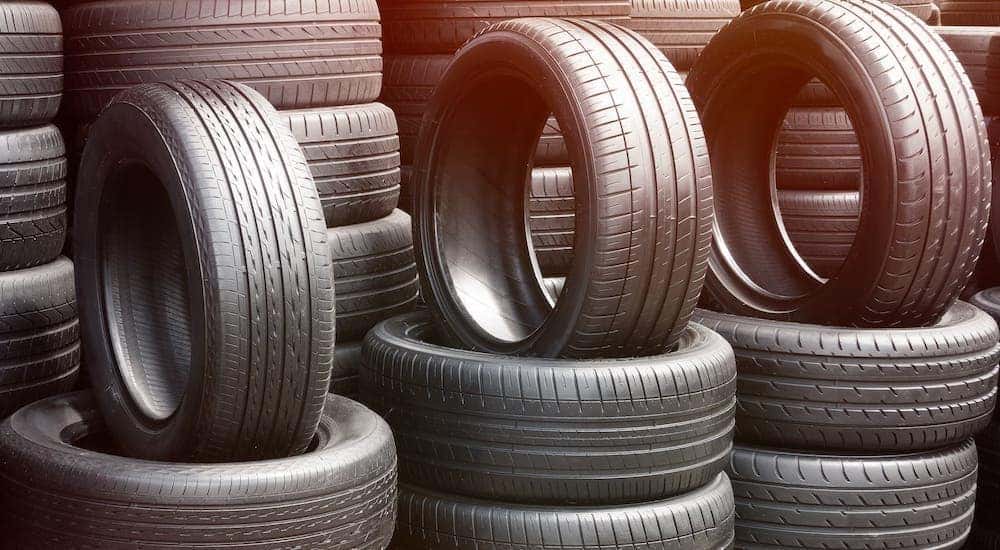Discover Exclusive Mopar Tire Service Specials in Morris Today
Discover Exclusive Mopar Tire Service Specials in Morris Today
Blog Article
Tire Service: Recognizing Tire Stress Monitoring Equipments
Recognizing Tire Pressure Tracking Equipments (TPMS) is a critical element of keeping ideal car performance and safety and security on the roadway. With developments in automobile innovation, TPMS has actually ended up being a typical function in modern vehicles, offering real-time information on tire pressure levels.

Importance of TPMS
The relevance of Tire Pressure Monitoring Systems (TPMS) depends on their capacity to boost car safety and security and performance with real-time tracking of tire stress degrees. Keeping the proper tire stress is important for ensuring optimal handling, braking, and overall safety and security of an automobile. TPMS provides drivers with prompt responses on any kind of overinflated or underinflated tires, enabling timely modifications to be made.
Components of TPMS
Making up different crucial aspects, a Tire Pressure Tracking System (TPMS) operates as an innovative safety and security attribute in modern cars. The primary parts of a TPMS consist of sensing units, a control module, and a warning sign. Sensors are generally situated in the tire shutoff stem or connected to the wheel setting up, where they determine tire stress and send data to the control module. The control component processes this information and causes a caution if it discovers significantly low stress in any one of the tires. The caution sign, usually a sign on the control panel, informs the chauffeur to examine the affected tire or tires. Some progressed TPMS designs likewise display the real tire pressure readings for every tire, giving chauffeurs with real-time info to make sure ideal tire performance and safety and security. By checking tire stress constantly, TPMS aids prevent accidents, decreases tire wear, and boosts fuel performance, making it an important part for lorry safety and security and performance.
Kinds of TPMS

On the various other hand, indirect TPMS depends on the vehicle's wheel speed sensing units to monitor tire stress. This system identifies underinflation by comparing the rotational rates of the wheels. Indirect TPMS is less expensive than straight TPMS, as it makes use of existing sensing units within the vehicle.
While direct TPMS provides a lot more precise readings, indirect TPMS is simpler in layout and typically calls for much less upkeep. Both systems have their constraints and benefits, and the choice in between them More Info often depends upon elements such as cost, car make, and individual choice. Comprehending the differences between these 2 sorts of TPMS can help automobile proprietors make notified choices pertaining to tire upkeep and safety and security.
TPMS Maintenance Tips
Conduct routine checks on the tire stress degrees and contrast them with the TPMS analyses to ensure they are consistent. Throughout tire turning or replacement, make certain that the TPMS components are handled meticulously to protect against any kind of possible damages. If the TPMS warning light illuminates on the control panel, deal with the concern promptly by inspecting the tire stress and the total system for news any faults.
Benefits of Correct Tire Stress
Preserving appropriate tire stress, as highlighted in TPMS Upkeep Tips, is important for gaining the many advantages associated with optimal tire pressure degrees. In addition, appropriate tire stress makes certain even tire wear, expanding the life expectancy of the tires and promoting more secure driving problems. In final thought, the advantages of appropriate tire pressure go beyond just tire longevity; they encompass boosted fuel performance, enhanced security, better automobile performance, and overall driving convenience.
Conclusion
To conclude, comprehending tire stress surveillance systems (TPMS) is critical for preserving optimum tire stress and guaranteeing car security. By recognizing the significance of TPMS, recognizing with its elements, recognizing the various types offered, adhering to proper maintenance ideas, and understanding the benefits of maintaining correct tire stress, chauffeurs can improve their driving experience and lengthen the life expectancy of their tires. Appropriate tire pressure is essential to safe and effective car procedure.

Report this page